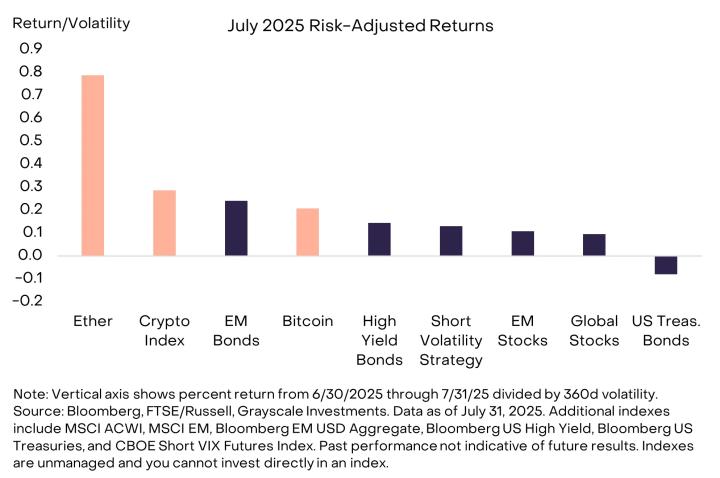Source: VanEck; Translated by: AIMan@Jinse Finance
Digital asset treasuries are rapidly developing, with BTC and ETH being the most common choices. Initially, entities chose BTC due to its strong value storage attributes created through monetary policy. The key to this policy structure lies in BTC's predictable issuance, which leads to a limited total supply. Recently, DATs (Digital Asset Treasuries) focused on Ethereum have emerged. These emerging DATs believe ETH is a better choice for operating digital asset treasuries, as savvy companies can engage in innovative financial activities to accumulate ETH faster than BTC.
BTC treasuries can increase their BTC holdings through additional financing, implementing complex option strategies, or lending BTC, while ETH treasuries have greater flexibility. ETH DATs can replicate BTC DAT financial strategies and stake their ETH to earn Ethereum network rewards and inflationary issuance. Additionally, they can participate in DeFi to generate extra income. However, in discussions, people overlook the fundamental differences between Ethereum and Bitcoin. Ethereum may create an economic system more favorable to its token holders.
Ethereum will celebrate its 10th birthday on July 30, 2025. Ethereum's initial inflation rate was far higher than Bitcoin's, at 14.4% and 9.3% respectively. However, Ethereum subsequently made two significant economic policy adjustments, lowering its inflation rate below Bitcoin's.
The first adjustment was EIP 1559, implemented in August 2021, which triggered the "burning" of ETH base transaction fees. The consequence of this change was that increased Ethereum activity led to a reduction in ETH's total supply.
The second major policy change was Ethereum's transition from Proof of Work (PoW) to Proof of Stake (PoS). This transition, called the "Merge," occurred in September 2022. The Merge reduced Ethereum's inflationary issuance from approximately 13,000 ETH/day to about 1,700 ETH/day, as it no longer needed to compensate miners maintaining its network.
As a result, from March 8, 2023, Ethereum's inflation rate has been lower than BTC's.Since then, ETH's supply has only grown by +0.2%, while BTC's supply has grown by +3%. In fact, these two upgrades combined have temporarily reduced Ethereum's ETH supply.
Between October 7, 2022, and April 4, 2024, the total ETH supply decreased from approximately 120.6 million to about 120.1 million, achieving an annualized inflation rate of -0.25% during this period. Subsequently, due to improvements in Ethereum's TPS, ETH burning has decreased, and the Ethereum network has accumulated an additional +0.5% supply. Meanwhile, BTC's supply increased by +1.1% during the same period.
ETH Inflation Rate Lower Than BTC Inflation Rate Since March 8, 2023
 Data source: glassnode, as of July 31, 2025.
Data source: glassnode, as of July 31, 2025.
However, the superiority of ETH's inflation policy may not last long. Bitcoin's halving in April 2024 predictably reduced its inflation rate by -50%. Currently, ETH's annual inflation rate over the past year is +0.38%, while BTC's is +0.84%. In the upcoming halvings, BTC's inflation rate will approach +0%. In contrast, Ethereum's inflation rate is difficult to predict and could be as high as +0.5% or even negative. Even if ETH's current inflation trajectory remains unchanged, BTC's inflation rate will not be lower than ETH's until 2028.
An underestimated dynamic is Bitcoin's security budget issue. Bitcoin maintains inflationary issuance as an incentive for miners. Without this, it would have to rely solely on network transaction fees. Last year, miners earned $278 million from transaction fees and $14.64 billion from network inflation. Clearly, if miners had to rely only on transaction fees, their economic situation would require a complete adjustment. With the halving, BTC's price must rise to compensate for the reduction in network inflation to maintain miners' economic viability. If this price trajectory does not occur, network security might have to adopt a different economic model. There are many potential solutions, and any changes would not ultimately impact Bitcoin. However, monetary policy adjustments will inevitably have winners and losers.
For example, one option to address the security budget dilemma is for Bitcoin to introduce inflation through a hard fork. Regardless of its specific implementation, it would weaken one of Ethereum's core criticisms: that its economic policy is too flexible. More importantly, it would impose a tax on Bitcoin holders in favor of miners. These political economic decisions are not zero-sum games, and the miner-centric Bitcoin system is more inclined towards miners' interests rather than token holders' interests. In a Proof of Stake system like Ethereum, token ownership determines which fork validators will follow, as stakes will transfer to validators choosing the priority fork. In contrast, Bitcoin's fork selection rules are ultimately decided by miners and nodes maintaining network security. Inherently, there is a significant conflict of interest favoring those who want to sell Bitcoin to fund their operations. The Proof of Stake (PoS) mechanism of Ethereum lacks this dynamic.
While each system has inherent economic trade-offs, a series of ETH trade-offs ultimately benefit ETH holders, as they ultimately determine the network's direction. Although BTC holders do influence the Bitcoin network, their impact on network development is far less than ETH holders' influence on Ethereum. Therefore, ETH may ultimately prove to be a better asset than BTC.






